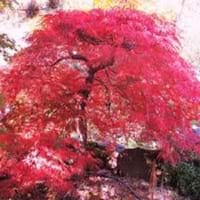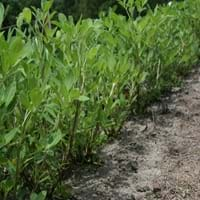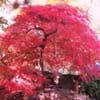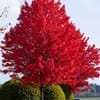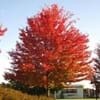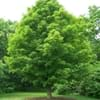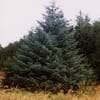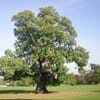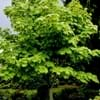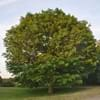What is
Life Span
Perennial
Annual
Type
Tree
Vegetable
Origin
Eastern Asia
South America
Types
Ever red , Crimson queen
Runner Peanuts, Virginia Peanuts, Spanish Peanuts
Number of Varieties
6
99+
6
99+
Habitat
Shady Edge
Warmer regions
USDA Hardiness Zone
5-8
5-9
AHS Heat Zone
8-2
Not Available
Sunset Zone
A3, 2a, 2b, 3a, 3b, 4, 5, 6, 7, 8, 9, 10, 12, 14, 15, 16, 17, 18, 19, 20, 21, 22, 23, 24
Not Available
Habit
Arching/Fountain-shaped
Clump-Forming
Information
Plant Size
Minimum Height
300.00 cm
99+
45.72 cm
99+
Minimum Width
300.00 cm
99+
91.44 cm
99+
Plant Color
Flower Color
Red
Yellow
Flower Color Modifier
Bicolor
Bicolor
Fruit Color
Red, Green
Tan, Brown
Leaf Color in Spring
Light Green, Lime Green
Yellow
Leaf Color in Summer
Green, Lime Green
Green, Gray Green
Leaf Color in Fall
Orange, Gold, Orange Red
Green, Gray Green
Leaf Color in Winter
Not Available
Green, Gray Green
Shape
Leaf Shape
Maple shaped
Oval
Thorns
No
No
Season
Plant Season
Spring, Summer, Fall, Winter
Spring
Growing Conditions
Sunlight
Full Sun, Partial Sun, Partial shade
Full Sun
Growth Rate
Slow
Fast
Type of Soil
Clay, Loam, Sand
Sandy
The pH of Soil
Acidic, Neutral
Acidic
Soil Drainage
Average
Well drained
Bloom Time
Early Spring, Spring, Late Spring, Early Summer
Summer
Repeat Bloomer
No
Yes
Tolerances
Drought
Drought
Care
Where to Plant?
Ground
Ground, Pot
How to Plant?
Transplanting
Seedlings
Plant Maintenance
Medium
Medium
Watering Plants
Watering Requirements
Requires regular watering
Water daily during growing season, Water more in summer
In Summer
Lots of watering
Lots of watering
In Spring
Moderate
Moderate
In Winter
Average Water
Average Water
Soil
Soil pH
Acidic, Neutral
Acidic, Neutral
Soil Type
Clay, Loam, Sand
Loam, Sand
Soil Drainage Capacity
Average
Well drained
Sun Exposure
Full Sun, Partial Sun, Partial shade
Full Sun, Partial Sun
Pruning
Remove damaged leaves, Remove dead branches, Remove dead leaves
No pruning needed
Fertilizers
All-Purpose Liquid Fertilizer
5-10-10 fertilizer, High amounts of nutrients, Magnesium, Phosphorous, Potassium
Pests and Diseases
Red blotch
Red blotch
Plant Tolerance
Drought
Drought
Facts
Flowers
Insignificant
Yes
Flower Petal Number
Single
Single
Fruits
Showy Fruit
No
No
Edible Fruit
No
Not Available
Fragrance
Fragrant Flower
No
No
Fragrant Fruit
No
Yes
Fragrant Leaf
No
Not Available
Fragrant Bark/Stem
No
Not Available
Showy Foliage
Yes
Yes
Showy Bark
Yes
No
Foliage Texture
Fine
Medium
Foliage Sheen
Matte
Matte
Evergreen
No
No
Invasive
No
Not Available
Self-Sowing
No
Yes
Attracts
Beetles
Flying insects, Insects
Allergy
Unknown
Abdominal pain, Anaphylaxis, Asthma, Diarrhea, Eczema, Itchiness, Low blood pressure, sneezing, Swelling, Urticaria
Benefits
Uses
Aesthetic Uses
Beautification, Bonsai, Landscape Designing, Showy Purposes
Not Used For Aesthetic Purpose
Beauty Benefits
Not Available
Good for skin, Skin Problems
Edible Uses
None
Yes
Environmental Uses
Air purification
Air purification
Plant Benefits
Medicinal Uses
Unknown
Alzheimer’s Disease, Colon Cancer, Coronary diseases, Energy, Fertility, Fights Depression, Gallbladder Diseases, Heart problems, Infections, Minerals, Nerve pain, Regulates Blood Sugar, Stomach Cancer
Part of Plant Used
Not Available
Seeds
Other Uses
Not Available
For making oil, Used As Food, Used for producing cooking oil, Used in salads
Used As Indoor Plant
No
No
Used As Outdoor Plant
Yes
Yes
Garden Design
Container, Feature Plant, Hedges, Mixed Border, Topiary / Bonsai / Espalier
Container, Edible, Herb / Vegetable, Tropical
Scientific Name
Botanical Name
ACER palmatum 'Omurayama'
ARACHIS hypogaea
Common Name
Japanese Maple, Weeping Japanese Maple
Peanut
In Hindi
Weeping Maple
मूंगफली
In German
Weeping Maple
Erdnuss
In French
Maple pleureur
Cacahuète
In Spanish
weeping maple
Maní
In Greek
weeping maple
Αράπικο φιστίκι
In Portuguese
chorando de bordo
Amendoim
In Polish
płacz klonu
Arachid
In Latin
weeping maple
Peanut
Classification
Kingdom
Plantae
Plantae
Phylum
Angiosperms
Vascular plant
Class
Eudicotyledones
Magnoliopsida
Order
Sapindales
Fabales
Family
Aceraceae
Fabaceae
Genus
Acer
Arachis
Clade
Not Available
Angiosperms, Eudicots, Rosids
Tribe
Not Available
Dalbergieae
Subfamily
Not Available
Faboideae
Number of Species
Not Available
1000
20
|
||
|
||
|
